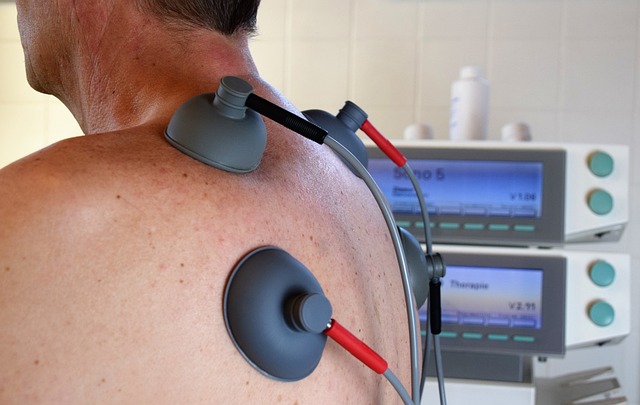Twenty years ago, the vast majority of physician practices and hospitals seemed to run on paper. Paper records, paper forms, paper notes covered in illegible physician scrawl — few parts of the hardcopy system were ever particularly efficient or helpful. When Electronic Health Records (EHRs) entered the administrative mainstream in the mid-2000s, they revolutionized the way providers handled and processed information. Within a few years, the days of paper-shuffling and ever-present re-filing fell to the wayside, allowing digital solutions would pave the way for increased effectiveness, optimized resources, and increased profits.
At this point, usage is all but universal; according to data collected by the Office of the National Coordinator for Health Information Technology, a full 96% of hospitals and 84% of physicians have adopted certified EHR systems. Earlier this month, Allied Market Research even released a report announcing that the market for electronic health records (EHR) is likely to draw in a whopping $33.3 billion by the close of 2023. The investment influx isn’t all that unexpected, given the myriad benefits of a digital system — an EHR database limits the negative impact of human error and further empowers providers to give more efficient and well-coordinated care delivery, provide better-informed diagnoses, and improve both in-house and patient-facing communication.
Given all their benefits, EHRs seem like a quick fix to the health care system’s efficiency problems — and in many ways, they are.
However, the efficiency “cure” doesn’t come without its own set of symptoms. To quote Dr. George Palmer in an article for Becker’s Hospital Review: “An EHR is only as good as the processes that it supports. If the technology is not supported by well-thought processes, hospitals may invest in complicated and expensive technologies that create more waste in a system already fraught with inefficiency.”
Healthcare organizations today need digital records systems. The benefits are undeniable, and the boost to efficiency and administrative operations inarguable; at this point, having an EHR system is a basic necessity in the competitive market. That said, implementing EHR systems without having a plan in place to address the technology’s flaws could cause more problems than the new system would solve.
Let’s take a closer look.
The Interoperability Problem
Interoperability is almost a cliche in healthcare management. Convincing competing systems providers to cooperate is notoriously difficult; the challenge is the main reason that, despite better available communication technologies, so many doctors still rely on outdated fax machines to ferry patient records to geographically distant providers.
When it comes to EHRs, the issue of inoperability is well-documented; one recent study from Black Book Market Research found that over a third of medical record administrators had trouble exchanging patient information across different EHR platforms. Worse, 62% of hospitals admitted that they could not use patient information from outside of their EHR system because access to that data was not available in their systems’ workflow.
There are ways to get around this problem — fax, for instance. In an age where better technology is so readily available, though, should we need to fall back on the clunky devices? In future years, care organizations and systems providers will need to settle on a compromise that allows them to communicate across platforms. Otherwise, interoperability will continue to scatter patients’ information and prevent easy communication between geographically disparate providers.
Information Overflow and Burnout
Having all of a patient’s information in one place is useful — until it isn’t. While EHRs are highly capable of centralizing data, the workflows can be overwhelming for doctors who need to check in with a dozen patients in a day. The added strain can lead them to feel overwhelmed and, if left unchecked, can lead to staff burnout and frustration. Productivity drops in periods of burnout; patient safety issues become a more significant concern.
However, if care providers have the administrative support and technical coaching they need to accustom to the workflow, EHRs can significantly boost their productivity and improve profits overall. Matthew Ernst, director of training, documentation, and support for digital innovation at Thomas Jefferson University, put the potential for gains this way: “[Imagine that] a doctor becomes more proficient in documenting in the EHR and is able to see an additional patient a day, three days a week. For a hospital with 500 physicians – 1,500 patients a week – 78,000 patients a year.” Totaled throughout a year, those hypothetical patients would provide a significant financial boost to the institution they visited.
Training providers to use their EHR systems effectively isn’t just an IT mandate — it’s a financial imperative.
Cybersecurity Concerns
For doctors and healthcare organizations, having a patient’s information in one place is helpful. For cybercriminals, the collation is downright attractive. Every EHR contains demographic data that a malicious player could use to steal an identity: names, employers, and current and past home addresses. It’s a goldmine — and unlike a credit card, a person can’t cancel their EHR if they get hacked. On average, stolen digital charts sell for about $50 apiece on the black market. Given that hackers breached 450 systems and accessed over 27 million patient records in 2016, the concern isn’t an unfounded one.
I’ve written before about the importance of having cybersecurity measures in place, but I’ll revisit it now: preparation is the best way to secure EHR data against bad actors. At the very least, organizations need to prevention measures against attackers and have a protocol in place in the event that hackers do breach the system.
Let me be clear: I’m not advocating for a return to the chaos of paper records. I firmly believe in the value of the EHR system — but we still have a ways to go. EHR systems aren’t a magical or quick fix to healthcare organizations’ efficiency systems, and they tend to bring problems in tow. Implementing new systems takes time and work; introducing new tech and expecting it to fix organizational issues as a matter of course dangerously optimistic.
Pay attention to the growing pains. Otherwise, the system you hoped would resolve your efficiency problems may start dragging your organization down.







